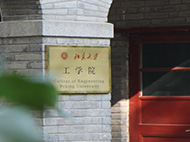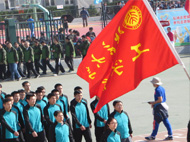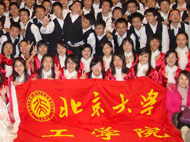主 办:力学系与湍流重点实验室
报告人:Prof. Paul Linden,Department of Applied Mathematics and Theoretical Physics,University of Cambridge,Centre for Mathematical Sciences
时 间:10月26日 周五 下午15:00
地 点:澳门太阳娱乐网站官网1号楼210室
Abstract:
Finite-amplitude manifestations of stratified shear flow instabilities and their spatio-temporal coherent structures are believed to play an important role in turbulent geophysical flows. Such shear flows commonly have layers separated by sharp density interfaces, and are therefore susceptible to the so-called Holmboe instability, and its finite-amplitude manifestation, the Holmboe wave. In this talk I will describe and elucidate the origin of an apparently previously unreported long-lived coherent structure in a laboratory stratified shear flow generated by exchange flow through an inclined square duct connecting two reservoirs filled with fluids at different densities. Using a novel measurement technique allowing for time-resolved, near-instantaneous measurements of the three-component velocity and density fields simultaneously over a three-dimensional volume, we describe the three-dimensional geometry and spatio-temporal dynamics of this structure. We identify it as a finite-amplitude, nonlinear, asymmetric confined Holmboe wave (CHW) and highlight the importance of its spanwise (lateral) confinement by the duct boundaries. We pay particular attention to the spanwise vorticity, which exhibits a travelling, near-periodic structure of sheared, distorted, prolate spheroids with a wide `body' and a narrower `head'. Using temporal linear stability analysis on the two-dimensional streamwise-averaged experimental flow, we solve for three-dimensional perturbations having two-dimensional, cross-sectionally confined eigenfunctions and a streamwise normal mode. We show that the dispersion relation and the three-dimensional spatial structure of the fastest growing confined Holmboe instability are in good agreement with those of the observed confined Holmboe wave. We also compare those results with a classical linear analysis of two-dimensional perturbations (i.e. with no spanwise dependence) on a one-dimensional base flow. We conclude that the lateral confinement is an important ingredient of the confined Holmboe instability, which gives rise to the CHW, with implications for many inherently confined geophysical flows such as in valleys, estuaries, straits or deep ocean trenches.
Short-biography:
Paul is Director of Research and the GI Taylor Professor Emeritus of Fluid Mechanics in the Department of Applied Mathematics and Theoretical Physics, and Professorial Fellow Emeritus of Downing College, University of Cambridge. He is also the Blasker Distinguished Professor Emeritus of Environmental Science and Engineering in the Department of Mechanical and Aerospace Engineering at UC San Diego. While at UC San Diego he was chair of the MAE department (2004-2009), the Director of the Environment and Sustainability Initiative (2007-2009) and the founding Director of the Sustainability Solutions Institute (2009-2010). He is a Fellow of the American Physical Society, the Royal Meteorological Society, Academia Europaea, and the Royal Society.
Paul is a fluid dynamicist and his research is concerned with fluid flow in the environment and in industry. In particular, he is interested in flow and turbulence in stratified and two-phase fluids, the fluid dynamics of advanced, naturally ventilated buildings, and flows on large scales where the rotation of the Earth is important. He uses laboratory experiments and theoretical models to elucidate the relevant physical processes underlying these flows and to provide predictions of their properties that can be applied in practice. Paul is a Deputy Editor of the Journal of Fluid Mechanics and the Editor of JFM Perspectives.
He currently leads three major projects in the UK. An Engineering and Physical Sciences Research Council (EPSRC) Programme Grant on the Mathematical Underpinnings of Stratified Turbulence (MUST) from 2013-2018, an EPSRC Grand Challenge grant on Future Cities: Managing Air for Green Inner Cities (MAGIC) from 2016-2021 and an European Research Council Advanced Grant on Stratified Turbulence and Mixing Processes (STAMP) 2017-2022.
欢迎广大师生光临!








